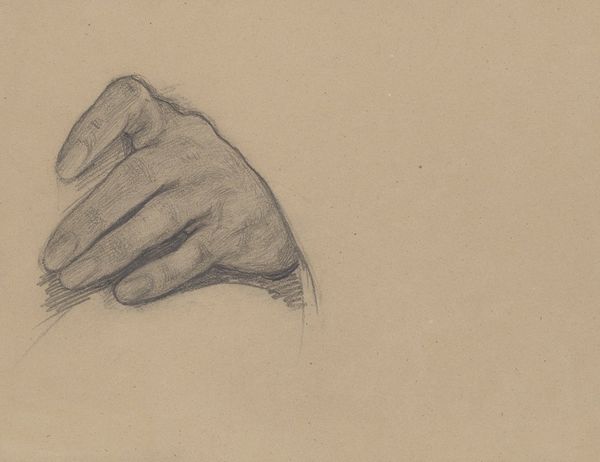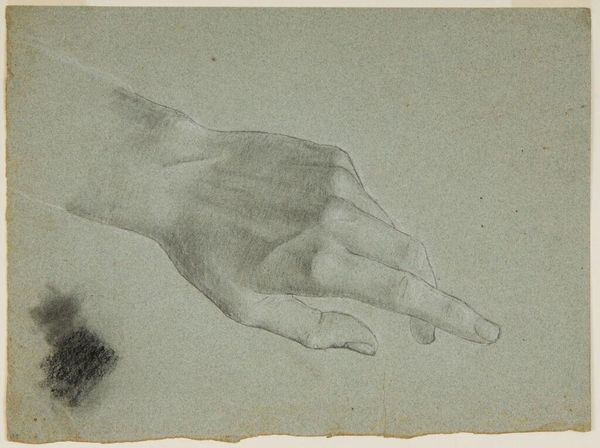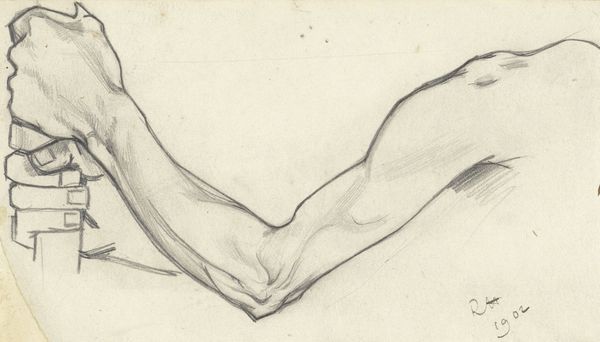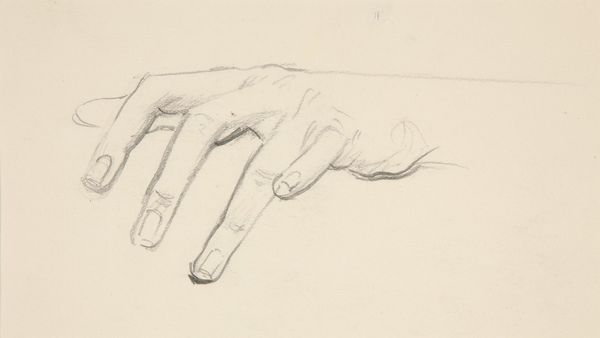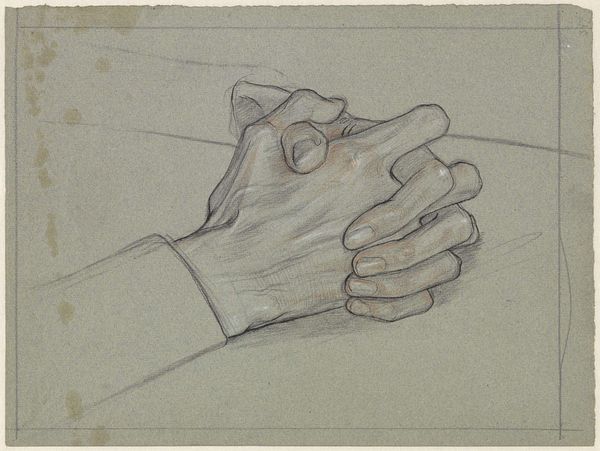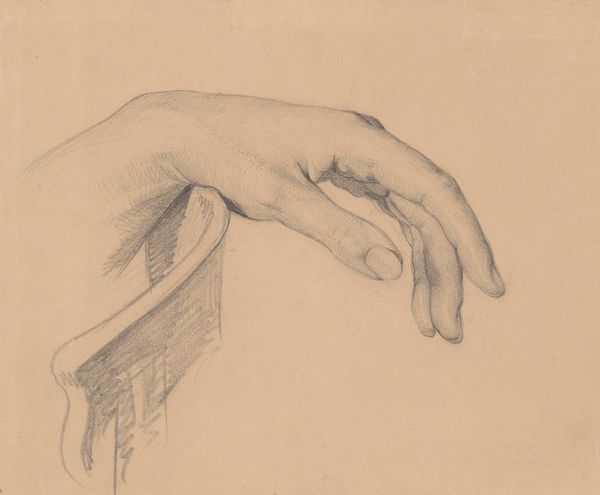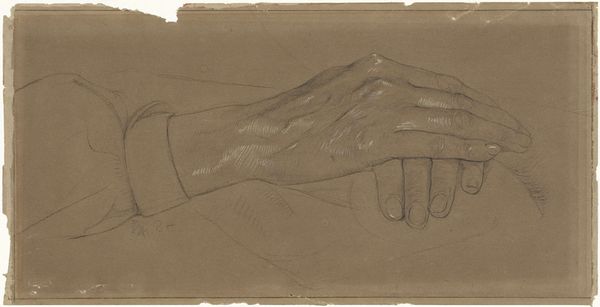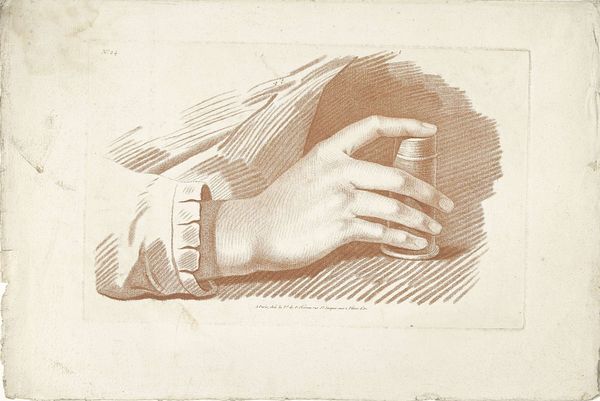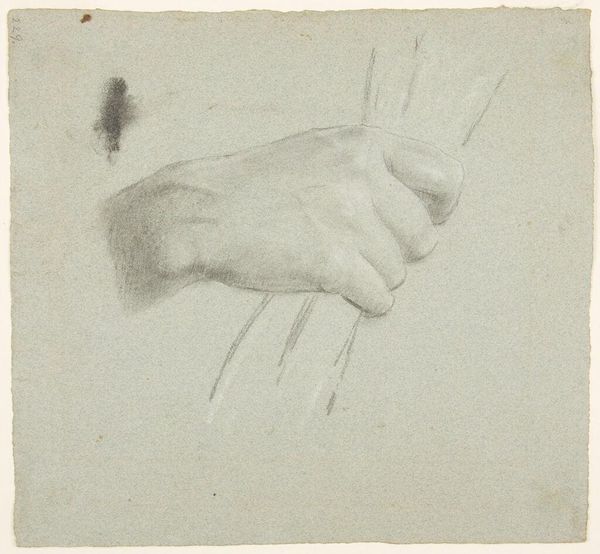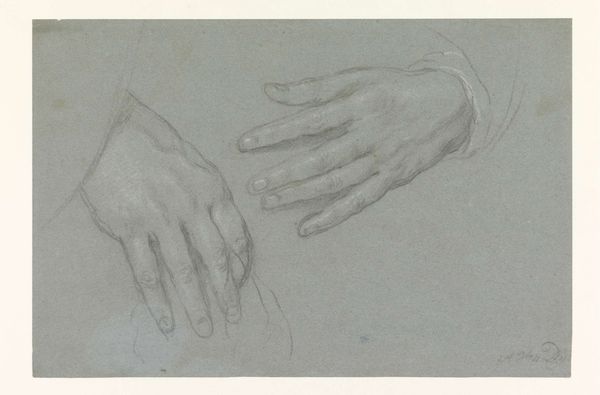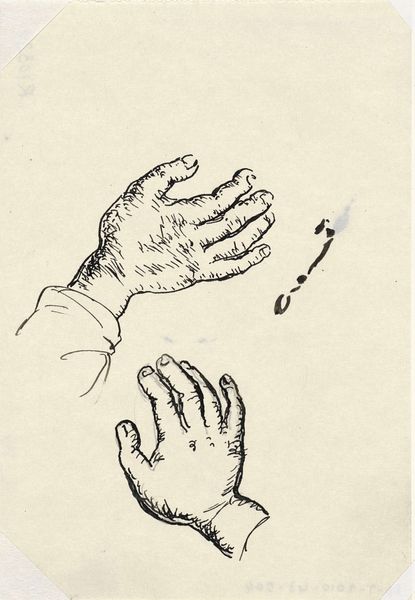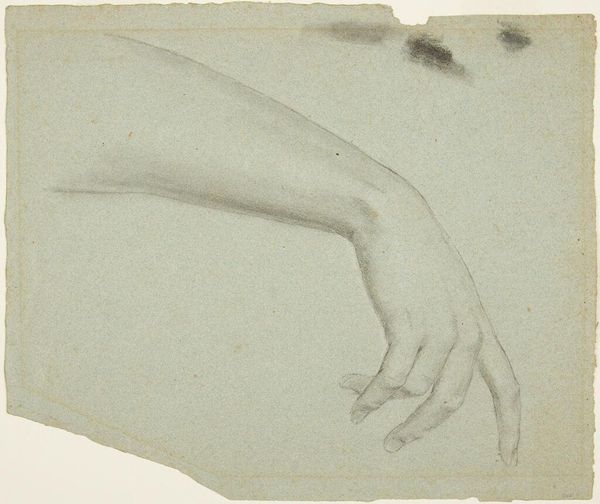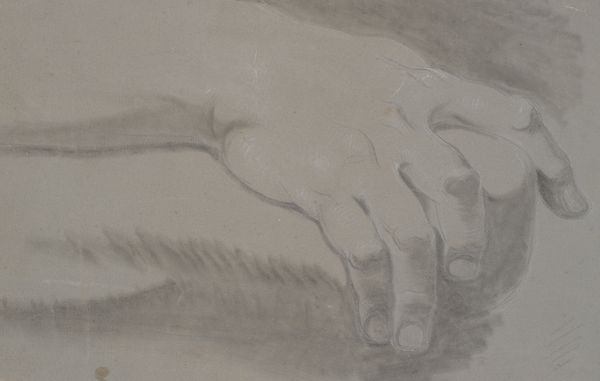
drawing, pencil, graphite
#
portrait
#
pencil drawn
#
drawing
#
amateur sketch
#
light pencil work
#
quirky sketch
#
pencil sketch
#
personal sketchbook
#
pencil
#
graphite
#
sketchbook drawing
#
pencil work
#
academic-art
#
sketchbook art
#
realism
#
initial sketch
Dimensions: height 62 mm, width 108 mm
Copyright: Rijks Museum: Open Domain
Curator: What a surprisingly intimate drawing this is. The artist, Isaac Weissenbruch, sometime between 1836 and 1912, captured this "Menselijke pols met een breuk in het bot," which translates to "Human wrist with a fracture in the bone." A rather clinical title, isn't it? Editor: My first impression is a feeling of constraint, even vulnerability. It's a delicate, almost hesitant, sketch in pencil, yet the details around the wrist… there’s a stark realism. The shadows cast across the knuckles speak to the discomfort implied by the injury. Curator: Indeed, there’s a raw honesty in the way Weissenbruch approaches the subject. One could almost feel the pain resonating from that delicate pencil work. It makes you wonder about his connection to the subject, or perhaps to healing in general. I see almost a therapeutic rendering here, no? Editor: Absolutely. It compels one to reflect on disability and the aestheticization of suffering. Who did this hand belong to, and what socioeconomic realities underpinned its access to (or denial of) adequate medical care? A broken bone impacts lived experience. Did Weissenbruch consider this disparity? Was that accessible to him? Curator: You are so right! It truly encourages one to consider those societal forces. I imagine Weissenbruch focused intently on the corporeal reality itself, using academic observation as his point of entry. There is a certain lack of…narrative beyond that wrist and the visible fracture lines. Editor: And precisely that absence can be potent. The simplicity throws into sharp relief how illness and injury aren't just individual traumas but occur within systems. Think about access to care, especially during Weissenbruch's time… even now, access to care, and especially the *type* of care one has access to is very racialized. I'm sure Weissenbruch may not have even considered how political that hand is... Curator: A powerful observation about accessibility. The constraints of that reality are made visible by that delicate pencil work and what one is ultimately looking at here –the drawing itself and its implicit socioeconomic story– transforms it from simply being a physical study to being a meditation of societal considerations as well. Editor: Exactly. It challenges us to confront not only physical pain but also systemic inequalities, and I leave this listening experience more keen to consider those ideas. Curator: Yes, leaving me contemplating art’s inherent ability to echo those very stories and to be those societal mirrors.
Comments
No comments
Be the first to comment and join the conversation on the ultimate creative platform.
